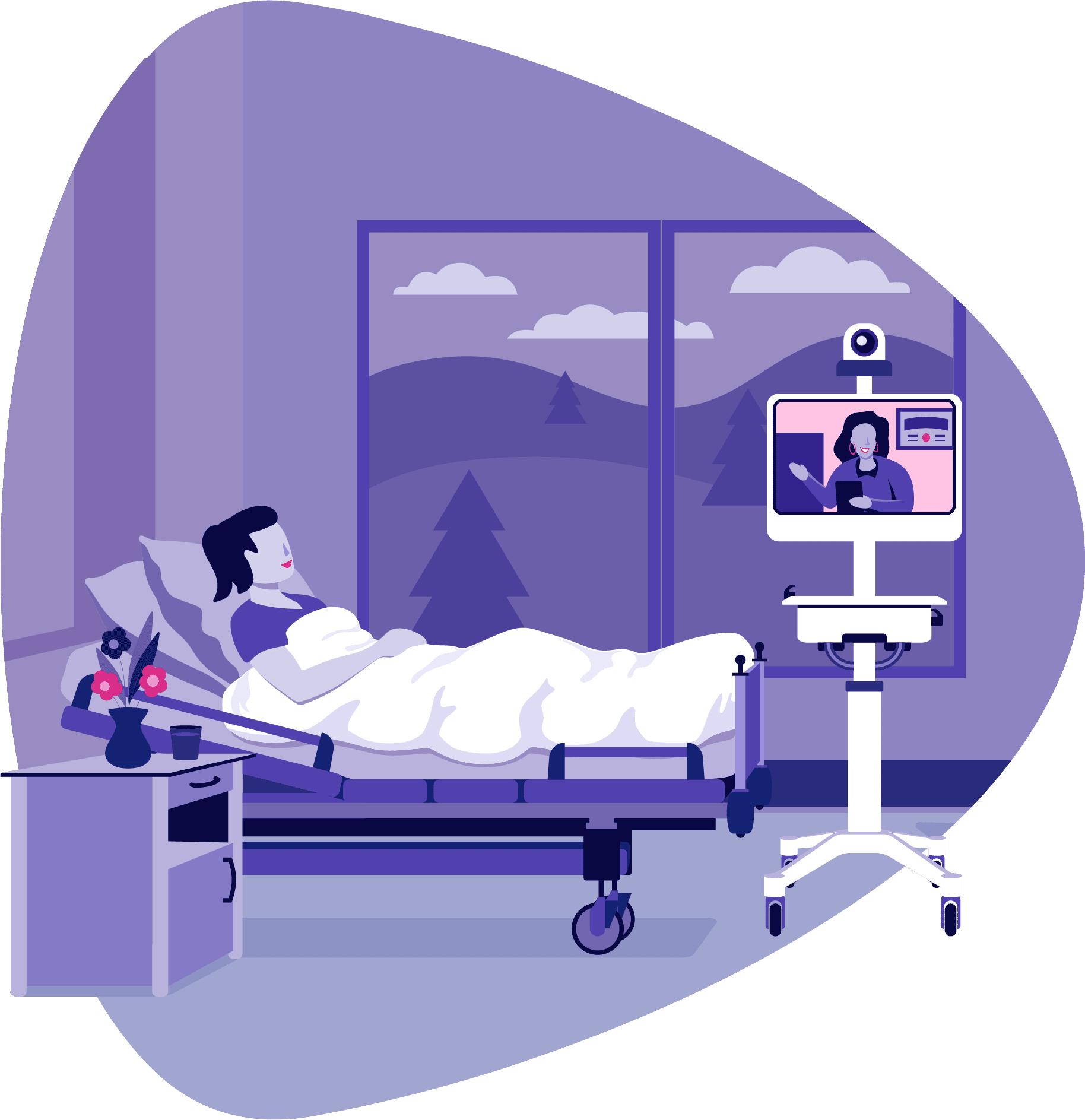There are few things worse than a psychiatric patient sitting idle in an emergency room bed. As a last resort, these patients have come in dire need of treatment, only to sometimes sit waiting for hours upon hours. With a nationwide shortage of psychiatrics, this has unfortunately turned into a commonality at hospital emergency rooms across the country. That’s where ER telepsychiatry can help.
In the past few months, I have noticed a spike in the number of requests we have been getting from hospital systems asking us about telepsychiatric consultations. Most of these groups have the same common questions:
- How does the process work?
- Can you implement within our system?
- What equipment do we need?
- How long do we have to wait for the doctor?
- What makes for a successful ER telepsychiatry program?
Let’s start from the top. How does the process work?
When done well, initiating a telepsychiatry consult is quite similar to calling any other consult in the ER. To begin with, a clinician evaluates a patient and determines that there is a need for a psychiatric consultation. Then, the clinician enters the basic information into a paging system and has an assistant in your ER take the telemedicine cart (which is basically a computer with a webcam on wheels) into the patient’s room. From here on, the consult works nearly identically to a standard face-to-face consult. One of our telepsychiatrists would promptly call you or a designated individual (such as a social worker), to discuss the basics of the patient’s presentation. Next, our psychiatrist connects to that telemedicine cart and is able to speak with and see the patient in real-time. The psychiatrist would then develop a treatment plan, which typically includes a disposition, and communicate this with the attending ER doctor. Finally, our psychiatrist writes a note directly into your EMR and the consult is complete.

Can you implement within our system?
We always do our best to implement with your existing equipment. It’s important to minimize the amount of change to your existing organization when you’re implementing a new project. Most hospitals already have an established EMR, prescribing system, and protocols for managing operations. We have found from gathering data and from personal experience that the more we are able to implement seamlessly within your systems, the higher the satisfaction of the clinicians and hospital we are partnered with. Because of this, Iris and our psychiatrists will adapt to work within your existing infrastructure – from your existing telemedicine equipment to your EMR and beyond!
What equipment do we need?
The equipment required for telepsychiatry is relatively simple. The very nature of psychiatry makes it a field that is well-suited for telemedicine as we typically do not require any additional equipment beyond a computer. If you already have existing equipment, chances are we can implement with your current systems without any additional work.
How long do we have to wait for the doctor?
In most cases, the wait is less than 15 minutes from the initiation of a consult to the psychiatrist being at your patient’s bedside. Timing is important in all areas of medicine, but it is critical to Emergency Medicine. For good patient care, it is necessary for things to run efficiently to allow the timely delivery of services to your patients. A good telepsychiatry partner should have systems in place that can initiate a telepsychiatry consult in a matter of minutes. There needs to be an intelligent way of handling changing volumes across multiple hospitals and being able to compensate for swells of consultations. We handle this by using smart technology, called Iris Ping, to be sure that there is never more than one consult waiting in the queue. When you combine this with an active and dynamic call pool of dedicated psychiatrists, you have a system in place that can literally put a psychiatrist at the patient’s bedside consistently in under 15 minutes.
What makes for a successful ER telepsychiatry program?
Many variables can affect the success of an ER telepsychiatry program, but in our experience one factor stands above the rest – cultural fit. It is important to partner with a group that matches your vision and values and is willing to be flexible to work within your organization’s mindset. This holds true at every level, from the leadership team to each individual clinician. In fact, the single most important factor that we have identified within cultural fit is the fit of each clinician. This likely comes as no surprise, as a telepsychiatry group is only as good as its individual psychiatrists. It is critically important that each psychiatrist that works with your facility understands the needs and goals of your Emergency Department. Over time, we find that our psychiatrists are able to build real relationships with your staff and truly become integrated members of your treatment team. In our eyes, that is the moment when a telepsychiatry program reaches the peak of its success.
There you have it. When done correctly, implementing ER telepsychiatry in your Emergency Department should be straightforward and seamless. Having access to a psychiatrist when you need them can allow you to more accurately and quickly develop a treatment plan for each individual. This means that these patients spend less time in the Emergency Room and can quickly get the mental healthcare that they need – whether that be at home, in the community, or in a hospital.

